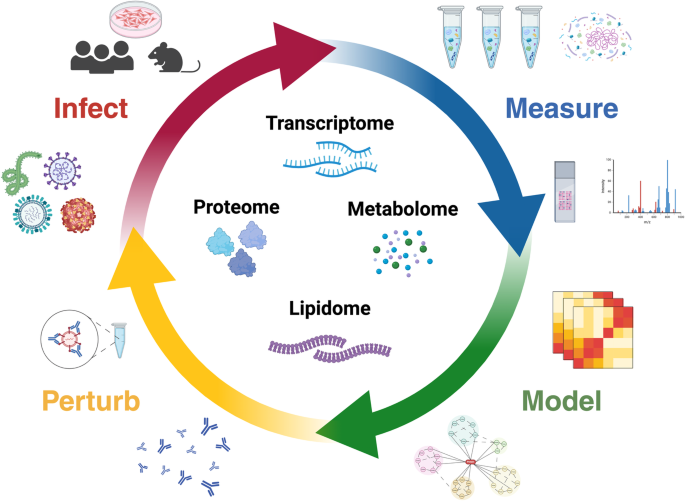2024-04-05 パシフィック・ノースウェスト国立研究所(PNNL)
<関連情報>
- https://www.pnnl.gov/publications/new-publicly-available-collection-data-illuminates-molecular-host-responses-lethal
- https://www.nature.com/articles/s41597-024-03124-3
ヒトの致死的ウイルス感染に対する宿主応答を明らかにするマルチオミクスデータの大要 A compendium of multi-omics data illuminating host responses to lethal human virus infections
Amie J. Eisfeld,Lindsey N. Anderson,Shufang Fan,Kevin B. Walters,Peter J. Halfmann,Danielle Westhoff Smith,Larissa B. Thackray,Qing Tan,Amy C. Sims,Vineet D. Menachery,Alexandra Schäfer,Timothy P. Sheahan,Adam S. Cockrell,Kelly G. Stratton,Bobbie-Jo M. Webb-Robertson,Jennifer E. Kyle,Kristin E. Burnum-Johnson,Young-Mo Kim,Carrie D. Nicora,Zuleyma Peralta,Alhaji U. N’jai,Foday Sahr,Harm van Bakel,Michael S. Diamond,… Katrina M. Waters
Scientific Data Published:02 April 2024
DOI:https://doi.org/10.1038/s41597-024-03124-3

Abstract
Human infections caused by viral pathogens trigger a complex gamut of host responses that limit disease, resolve infection, generate immunity, and contribute to severe disease or death. Here, we present experimental methods and multi-omics data capture approaches representing the global host response to infection generated from 45 individual experiments involving human viruses from the Orthomyxoviridae, Filoviridae, Flaviviridae, and Coronaviridae families. Analogous experimental designs were implemented across human or mouse host model systems, longitudinal samples were collected over defined time courses, and global multi-omics data (transcriptomics, proteomics, metabolomics, and lipidomics) were acquired by microarray, RNA sequencing, or mass spectrometry analyses. For comparison, we have included transcriptomics datasets from cells treated with type I and type II human interferon. Raw multi-omics data and metadata were deposited in public repositories, and we provide a central location linking the raw data with experimental metadata and ready-to-use, quality-controlled, statistically processed multi-omics datasets not previously available in any public repository. This compendium of infection-induced host response data for reuse will be useful for those endeavouring to understand viral disease pathophysiology and network biology.


